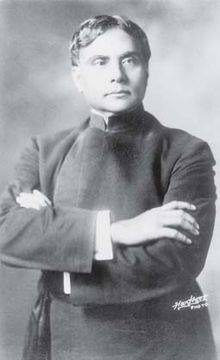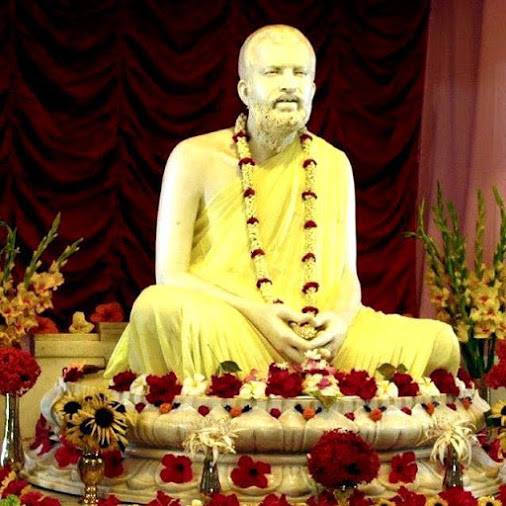Like The River Flows - Swami Tejomayananda.
----------------------------------------------------------------------------------
Monday, April 26, 2021. 07:07. AM.
----------------------------------------------------------------------------------
Svetasvatara Upanishad compares the world to a river, SWAMI TEJOMAYANANDA explains in this commentary
"We think of Him as a river that contains the waters of five streams that has five major turnings due to five causes, that has the five pranas as the waves, the mind — the basis of the fivefold perception — as the source, and has five whirlpools, the fivefold misery as the rapids, fifty aspects and five branches."
—Svetasvatara Upanishad, shloka 5
The great river: the source of all rivers can be traced back to the oceanic waters and they again merge back into the ocean. Similarly, the world emerges from and merges back in the Brahmn or Truth, which is its very substratum. To enjoy a swim in the river, we should be aware of its depth and the flow of current, otherwise there is danger of drowning. Rivers have tricky whirlpools and dangerous creatures. We are advised never to jump into unknown waters. So also in life — this world becomes calamitous for unthinking people who get caught up in it and suffer. However, the wise ones derive happiness from the same world.
The students meditated and saw the Brahmn as a river. What appears to the ignorant as the samsara nadi, river of worldly existence, is seen by the wise as the brahma nadi, river of truth. The metaphor unfolds thus.
Panca-sroto’mbum:
The waters of many streams come together to form big rivers. The sense objects enter into us through the five sense organs — ears, skin, eyes, tongue and nose.
Panca-yoni-ugra-vakram:
Panca-prana-urmim:
Ripples and waves are created as water faces obstacles and dashes against river banks. The five physiological functions — prana, breathing, apana, excretion, vyana, circulation, udana, reversal action, and samana, digestion — are the waves formed in this worldly river.
Panca-buddhyadi-mulam:
What is the source of the five senses which are the streams that form this river? Indeed it is the mind, without the backing of which the senses cannot function. For instance, if the mind is distracted, even if the eyes are open and the car is right in front of us, one does not see it, and there is an accident. A preoccupied mind does not hear even when spoken to, loudly and clearly.
Panca-avartam:
As the streams of the senses flow downstream, they get engaged with the whirlpools of the five sense objects — sounds, touch, colours and forms, tastes and smells. They are so tempting that one can easily drown in them.
Panca-duhkhaugha-vegam:
The river has many rapids where swift current can easily sweep us off. The five rapids of life are the sorrows associated with the five stages of life.
Asti:
The sorrow faced by the foetus living in the cramped conditions of the womb and totally at the mercy of the mother.
Jayate:
The pain of birth is experienced by both the mother and the child.
Vardhate:
The pangs of growing. Each stage of growth — infancy, childhood, adolescence, youth and adulthood — has its own trials and travails.
Apaksiyate:
The troubles of old age are very evident. Debility, senility, disease and other endless sorrows drag us through old age.
Vinasyati:
The individual finally faces the sorrow of death.
Pancasad-bhedam:
The Yoga Shastras describe chakras which are the centres along which the Kundalini shakti, psychic energy, travels to merge into the chakra on the top of the head called the Sahasrara. Each chakra is described as a lotus with certain number of petals. The lotus at the Mooladhara has four petals, the one at Swadhisthana has six, Nabhi chakra — 10 petals, Anahata —12, Vishuddha — 16 and the lotus at Ajna chakra has two petals; together these 50 petals represent various types of thoughts which prevail in the individual and the world.
Panca-parvam:
Some rivers are seen to branch out. Some like the Brahmaputra branch out to form a delta region. The river of life has five such branches of avidya — ignorance of the Self, asmita — identification with the not-Self that gives rise to the notion of doership, raga — liking towards that which is considered a source of joy, divesa — aversion towards that which appears to give sorrow, and abhinivesa — fear of death. Fascinating indeed is this river in which we find ourselves.
*****
*Swami Tejomayananda.
=========================================================================





Comments
Post a Comment